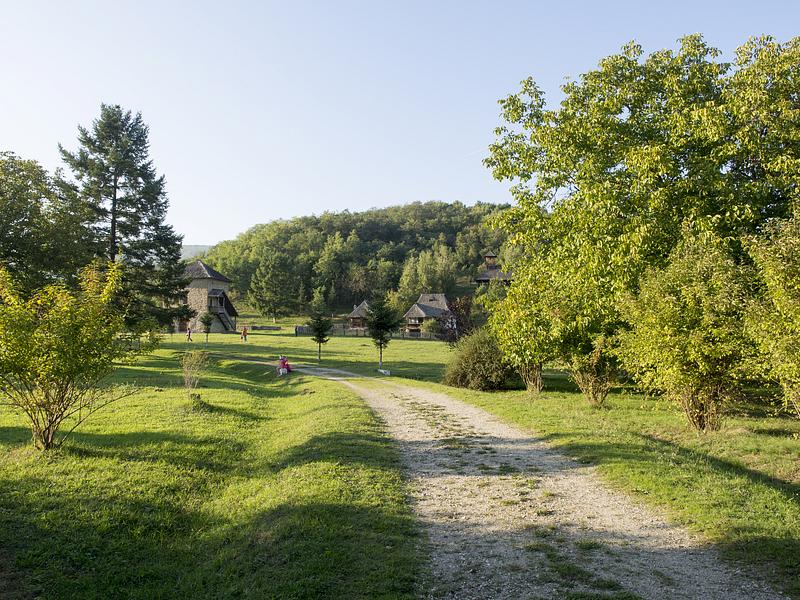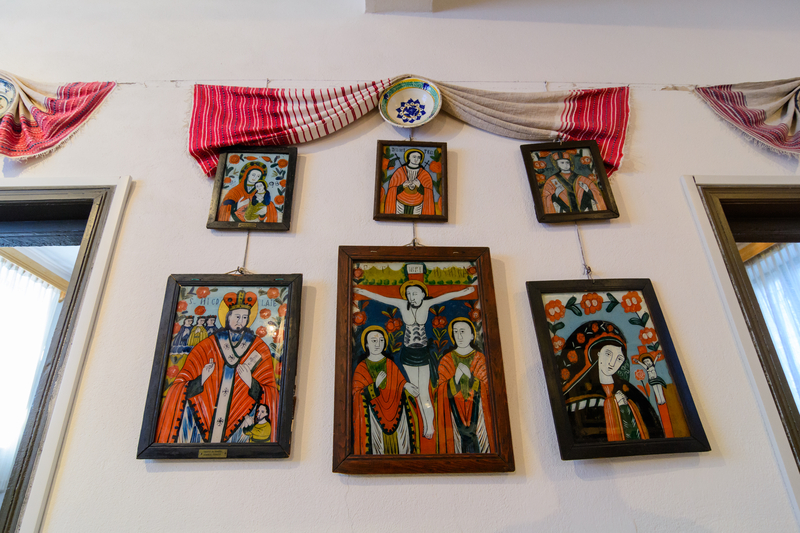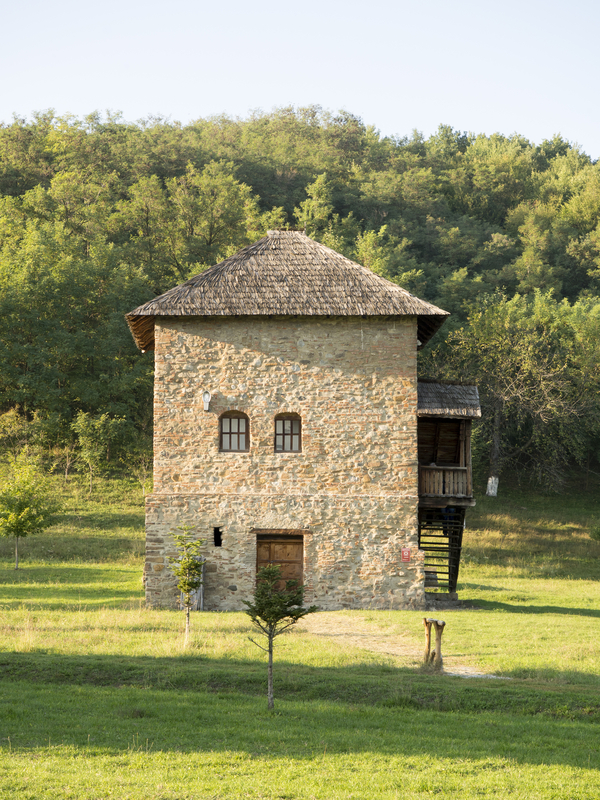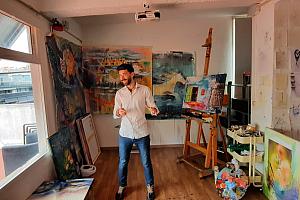Travel: Museums to discover in Romania’s villages

Besides the heritage of traditions, customs, and vernacular architecture, local villages host numerous and diverse museums, ranging from art collections and archeological sites to memorial houses and venues presenting specific aspects of the history of rural life. As a Night of Museums program dedicated to venues in rural areas has been announced for next year, we outline below some options for those interested in discovering what local villages have to offer.
The Museums of Textiles in Băiţa, Hunedoara
This private museum exhibits the textiles in the FARZ Collection (Florica, Ana and Romulus Zaharia Collection). The collection includes materials and tools used in traditional textile production worldwide throughout history, with flat textiles, costumes, accessories and tools from Romania, Eastern and Central Europe, Western Europe, the Near East, India, Central Asia, Japan, China, Southeast Asia, Africa, Oceania and the Americas. The collection was created systematically and professionally with a focus on the technical aspects of textiles.
Founder Florica Zaharia holds a PhD in textiles and is a Conservator Emerita of the Metropolitan Museum of Art, where she worked for nearly half of her life as a textile conservator – thirteen years of which she was the Conservator in Charge of the Department of Textile Conservation.
One exhibition currently on display is Symbol and Splendor: Woodcut Inspired by the Ancestral Design of the Pădureni’s Blouse, looking at its symbolism and motifs. The exhibition is open until August 1.
More about the museum and the visiting options here.
The George Enescu houses in Botoșani
Some 15 km away from Dorohoi, in Liveni, Botoșani county, the house where Romania’s celebrated musician George Enescu grew up is open as a museum displaying various items pertaining to the artist’s childhood. The small house with a wooden verandah hosts items such as the musician’s toy violin, drawings he made as a child, scores from his youth and various photographs.
Also in Botoșani county, visitors can travel to the George Enescu House in Mihăileni, whose rescue and rehabilitation started in 2013 at the initiative of pianist Raluca Ştirbăţ, the president of the George Enescu International Society in Vienna. This is the parental house of the mother of the composer, Maria Cosmovici, and the Pro Patrimonio Foundation, the Bucharest Branch of the Order of Architects in Romania, and Remember Enescu Foundation worked to save the house, where the composer spent many of his holidays, working and composing parts of his masterpieces. It was his last home before leaving the country in the autumn of 1946. The edifice, an example of the vernacular architecture of the first half of the nineteenth century, now hosts a center for the study of music.
The Collectivization Museum in Tămășeni, Neamț
Opened two years ago, this museum starts from the story of one family to open the discussion about what the collectivization of agriculture, which took place in the early years of the Communist regime, meant for the inhabitants of Romanian villages.
The collectivization ran from March 1949 to 1962, and by then some 96% of the arable land and 93% of the agricultural land passed into state property or “socialist forms of property,” according to data presented by the museum. Those who resisted the collectivization driver were arrested and imprisoned and later sent to labor camps.
More about the museum here.
The Art Museum in Topalu, Constanţa
This museum is one of its kind among the ones in rural villages. It hosts an art collection donated by doctor Gh. Vintilă to his native commune, Topalu. Visitors can see here more than 200 works of Romanian art created by Nicolae Grigorescu, Ştefan Luchian, Nicolae Tonitza, Theodor Pallady, Gh. Petraşcu, Nicolae Dărăscu, Jean Al. Steriadi, Camil Ressu, Alexandru Ciucurencu, Dimitrie Paciurea, Oscar Han, and more. The museum, named Dinu şi Sevasta Vintilă, is hosted in the doctor’s family house. Some of the works in the collection can be seen here.

Alexandru Ioan Cuza Palace in Ruginoasa, Iași
The palace, erected in the early 19th century, became the property of Alexandru Ioan Cuza, the ruler of the united Romanian principalities, in 1862. Ruginoasa is also where Cuza was first buried, before his remains were moved to Curtea de Argeș and eventually Iași. The museum hosted by the palace recreates the former residence of the ruler and recreates numerous furniture items while showcasing a large number of patrimony objects and original documents.
The archeological site in Cucuteni, Iași
Located some 10 km away from Târgu Frumos, the archeological site in Cucuteni hosts a tumulus, a Geto-Dacian princely burial mound dating to the 4th century BC. It was discovered on Dealul Gosan and is today protected as part of a museum.
Elsewhere, the name of Cucuteni is linked to two other archeological discoveries. The first one is the Băiceni Treasure, discovered several hundred meters away from the tumulus and consisting of more than 70 items pertaining to the Dacian era. The second relates to the Cucuteni culture, an Eneolithic archaeological culture (c. 5500 to 2750 BCE) discovered at the nearby Cetățuia Hill in 1884.
Besides the grave itself, visitors can see here a permanent exhibition focused on the local history from the Paleolithic to the 19th century, and highlighting the Cucuteni culture.

Popa House, Târpeşti, Neamţ
Some 12 km away from Târgu Neamț, in the village of Târpești, visitors can find Casa Popa (Popa House), established by artisan Neculai Popa. This is where visitors can see the naïve sculptures and folk masks made by Popa, an exhibition of Romanian naïve painting and a private collection encompassing ethnography, archaeology, numismatics, and religious items.
The museum was established by Popa, a collector of folk art and items, in his household in 1964. A sculpture, ceramics and painting workshop is also available on site. Those who visit can also find bed & breakfast accommodation on site. More about it here.

The glass icons museum in Sibiel, Sibiu
Sibiel, a village in the region of Marginimea Sibiului, close to Sibiu, hosts this museum which carries the name of its founder, the priest Zosim Oancea. Its collection encompasses some 600 icons painted on glass by peasant artists across Transylvania. Some of the icons are from the areas of Bucovina and Banat, while others are of Austrian origin.
The idea of the museum emerged in the 1960s, after priest Oancea restored the village’s oldest church, which features frescoes made in the 18th century by painters Stan and Iacob of Rǎşinari. Looking to enrich the place’s patrimony, he urged inhabitants to donate the glass icons they owned, even degraded or broken ones, to gather in a museum. Other icons were purchased, and the institution also benefited from international donations. More about the museum here.

The Village Museum in Bujoreni, Vâlcea
The village museums of several large Romanian cities, such as the capital Bucharest or Sibiu, are quite well-known tourist destinations, but one such museum can be found in the village of Bujoreni, in Vâlcea county. The Vâlcea Village Museum, spreading over some eight hectares, aims to offer visitors a snapshot of a traditional rural household in the area. It encompasses more than 40 households, showcasing their structure according to the traditional occupations practised – agriculture, fruit growing, winegrowing, or cattle breeding.
The museum includes several houses with pavilions typical of the Horezu ethnographic area, households specializing in winegrowing, and a culă, a semi-fortified building found in the region of Oltenia. Besides the houses, visitors can see various annexes, such as stables or storage areas, but also public buildings or specialized constructions, including an early 20th-century school, water mills, beehives, a late 19th-century inn, or a wooden church built in the 18th century.
A dedicated section presents various traditional crafts and techniques, from pottery making to weaving or carpentry.
Virtual visits
To get a sense of what rural museums offer, the option of a virtual visit is available on the platform muzeedelasat.ro. Eighteen museums from the region of Muntenia and 30 from the region of Moldova are available for a 3D virtual tour on the platform that also offers photos and information about these institutions. The website is available in an English version.
(Opening photo: Ciolca | Dreamstime.com)
simona@romania-insider.com













